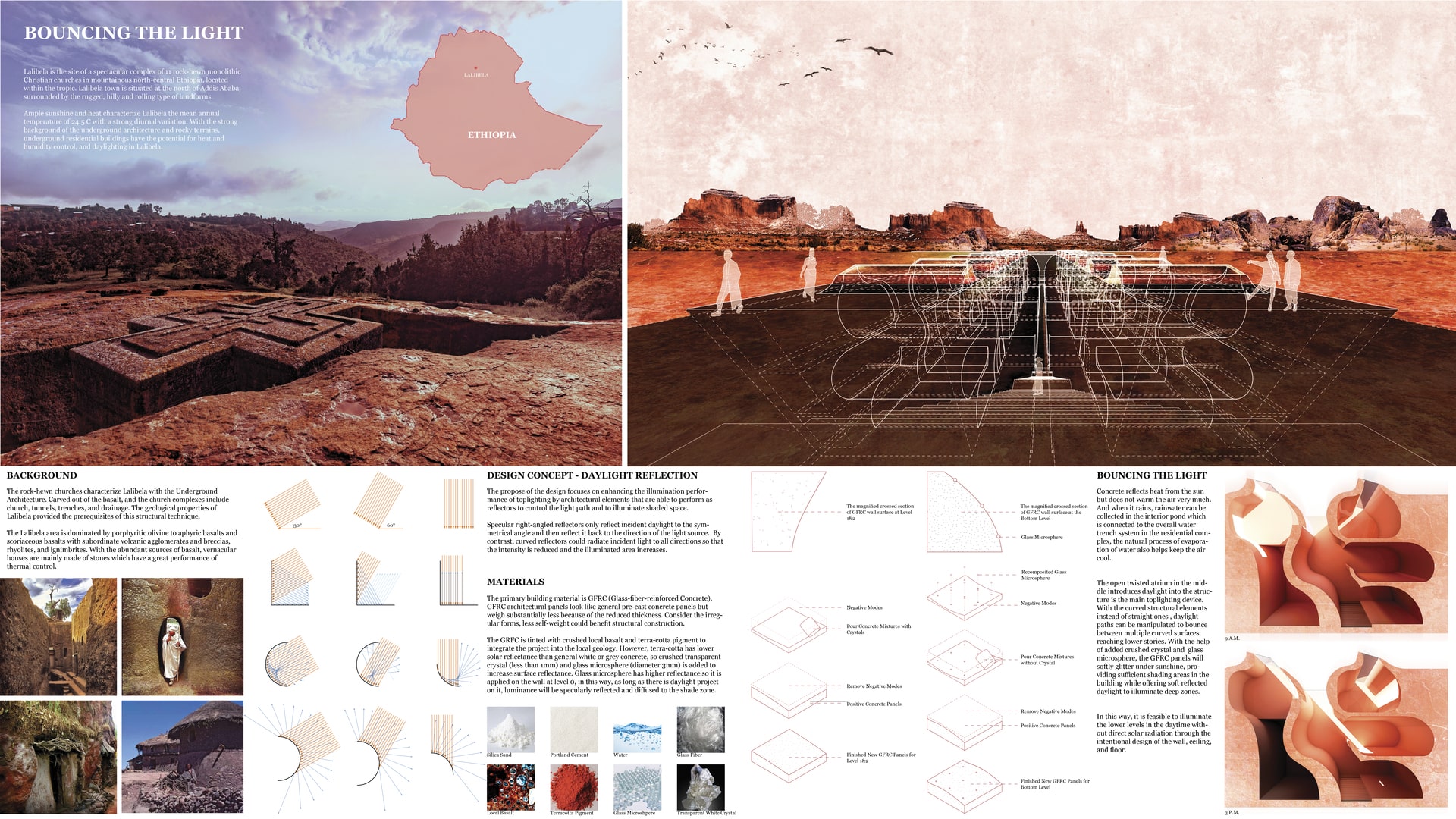Project Description
Lalibela is the site of a spectacular complex of 11 rock-hewn monolithic Christian churches in mountainous north-central Ethiopia, located within the tropic. Lalibela town is situated at the north of Addis Ababa, surrounded by the rugged, hilly and rolling type of landforms. Ample sunshine and heat characterize Lalibela the mean annual temperature of 24.5 C with a strong diurnal variation. With the strong background of the underground architecture and rocky terrains, underground residential buildings have the potential for heat and humidity control, and daylighting in Lalibela. The rock-hewn churches characterize Lalibela with the Underground Architecture. Carved out of the basalt, and the church complexes include church, tunnels, trenches, and drainage. The geological properties of Lalibela provided the prerequisites of this structural technique. The Lalibela area is dominated by porphyritic olivine to aphyric basalts and scoriaceous basalts with subordinate volcanic agglomerates and breccias, rhyolites, and ignimbrites. With the abundant sources of basalt, vernacular houses are mainly made of stones which have an excellent performance of thermal control. The propose of the design focuses on enhancing the illumination performance of toplighting by architectural elements that are able to perform as reflectors to control the light path and to illuminate shaded space. Both for the purpose of emphasizing the performance of toplighting and the benefit of underground structure in terms of heat control, the design is an underground residential complex. The design concept came from light reflection on differently shaped surfaces. Specular right-angled reflectors only reflect incident daylight to the symmetrical angle and then reflect it back to the direction of the light source. By contrast, curved reflectors could radiate incident light to all directions so that the intensity is reduced and the illuminated area increases. The primary building material is GFRC (Glass-fiber-reinforced Concrete). GFRC architectural panels look like general pre-cast concrete panels but weigh substantially less because of the reduced thickness. Consider the irregular forms, less self-weight could benefit structural construction. The GRFC is tinted with crushed local basalt and terra-cotta pigment to integrate the project into the local geology. However, terra-cotta has lower solar reflectance than general white or grey concrete, so crushed transparent crystal (less than 1mm) and glass microsphere (diameter 3mm) is added to increase surface reflectance. Glass microsphere has higher reflectance, so it is applied on the wall at level 0, in this way, as long as there is daylight project on it, luminance will be specularly reflected and diffused to the shade zone. Concrete reflects heat from the sun but does not warm the air very much. And when it rains, rainwater can be collected in the interior pond which is connected to the overall water trench system in the residential complex, the natural process of evaporation of water also helps keep the air cool. The open twisted atrium in the middle introduces daylight into the structure is the main toplighting device. With the curved structural elements instead of straight ones , daylight paths can be manipulated to bounce between multiple curved surfaces reaching lower stories. With the help of added crushed crystal and glass microsphere, the GFRC panels will softly glitter under sunshine, providing sufficient shading areas in the building while offering soft reflected daylight to illuminate deep zones. In this way, it is feasible to illuminate the lower levels in the daytime without direct solar radiation through the intentional design of the wall, ceiling, and floor.
